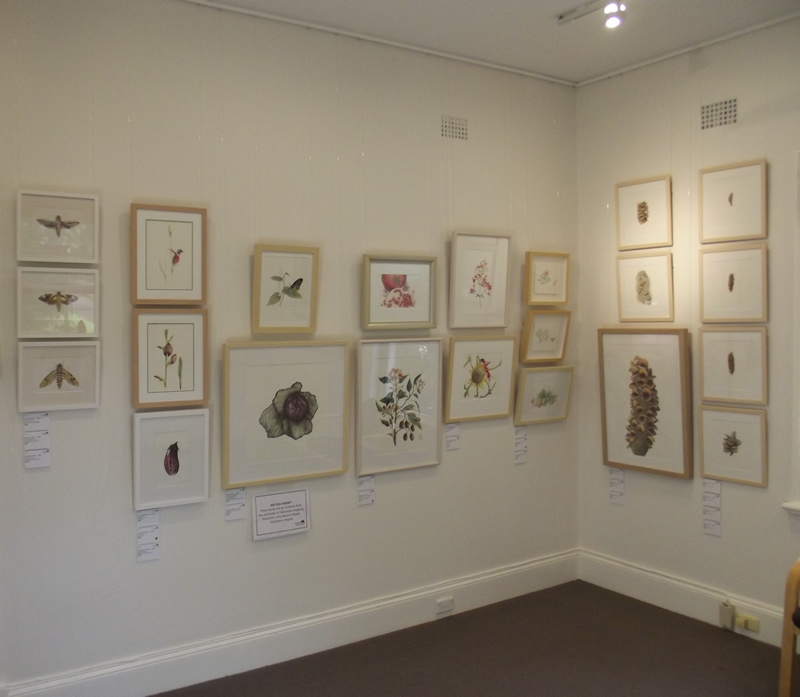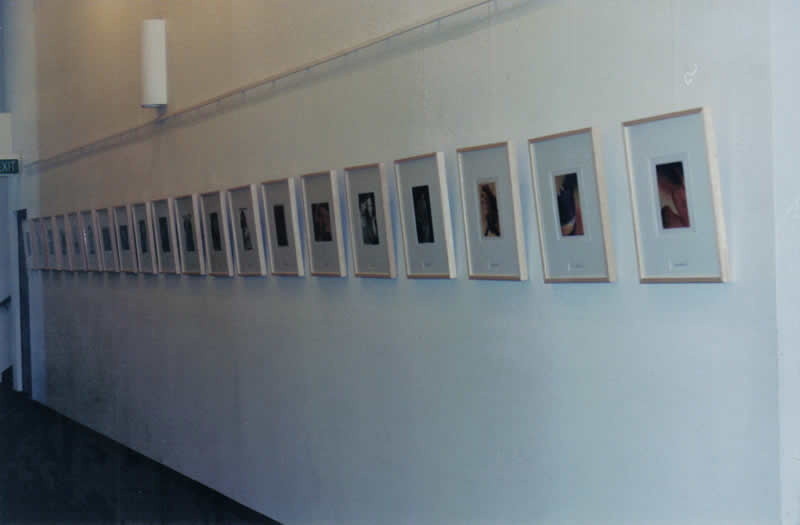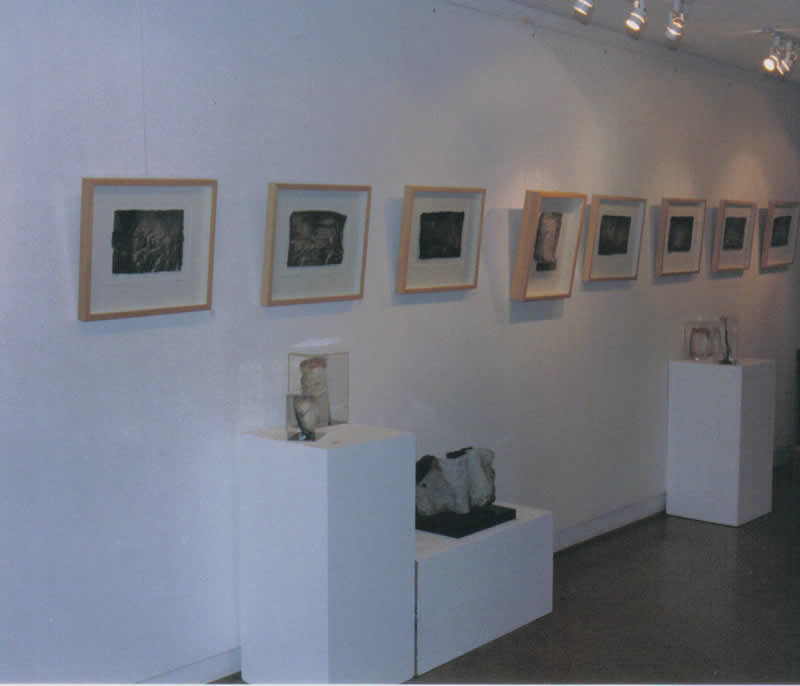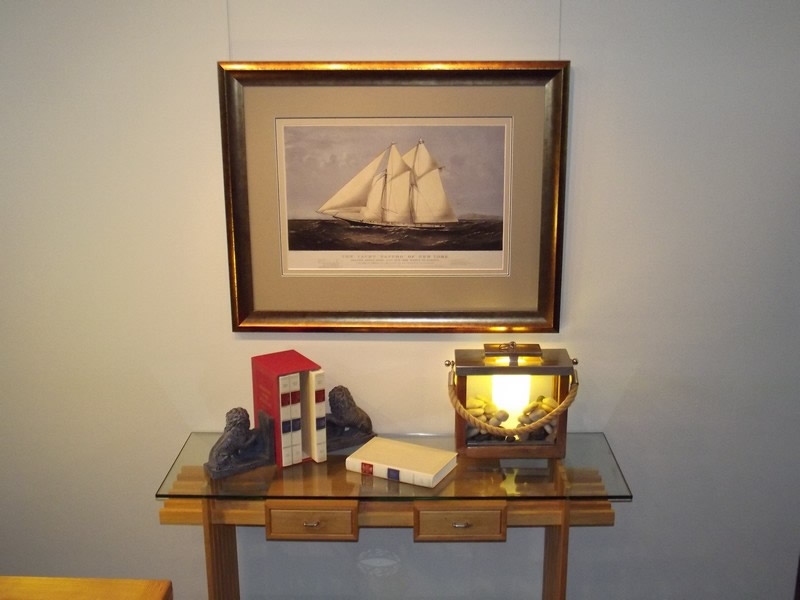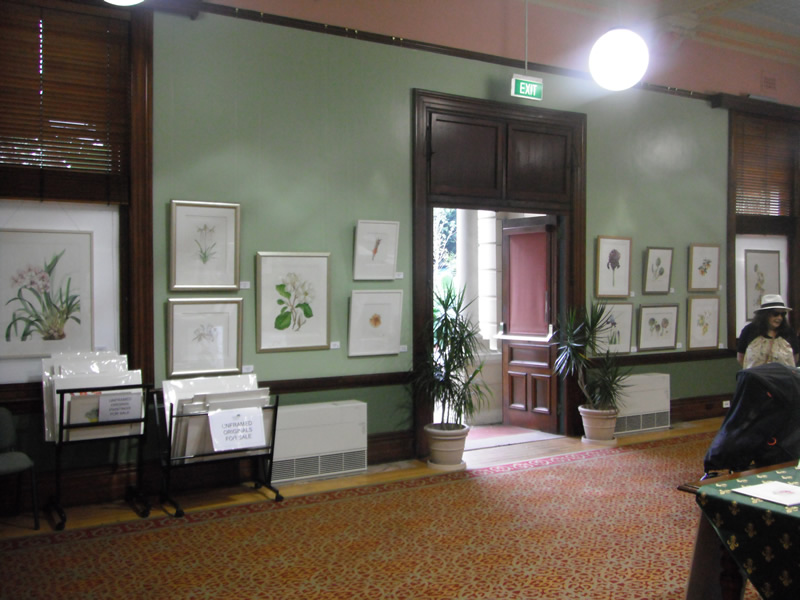Hanging pictures is a matter of individual taste, but here are some simple guidelines for great results.
The choice of hanging method depends on the weight, the site, and the wall construction and condition.
Use a professional hangman (we always use Steven Gray of “About Picture Hanging”, M: 0438 196 435). A professional will choose the safest method and save you time and money in the long run. The methods from which to choose include: Split batten; Picture rail with wire or chain; a gallery hanging system; or drill and screw into concrete, brick or Gyprock.
NEVER USE ANYTHING THAT JUST STICKS ON THE WALL, NO MATTER WHAT IT SAYS ON THE PACKAGE.
LET THE OUTER PERIMETER FORM A RECTANGLE.
Whether you are hanging a matched set, or a collection of unmatched frames with a common theme, the outer perimeter can form a rectangle. The focal point of the group should be at the eye level of the viewer.
BALANCE WITH FURNISHINGS.
Pictures are two dimensional, but we view them in 3D space. Balance them with other furnishings and objects, both in scale and style.
MIX THE FRAMES.
If your pictures are different, use individual but sympathetic frames. It indicates that you have built the collection over time, not just bought a “job lot”. Matched sets of identical frames also look effective, provided they are the same overall size. Sometimes we frame dissimilar size pictures in one size frame, adjusting the mats accordingly.
PLAN AHEAD.
Lay the framed pictures on the floor, arrange and review them until you are satisfied with the balance. It is easier to move them on the floor than to re-drill the wall.
BACKGROUND IS IMPORTANT.
Choose a neutral background, one that does not compete with the pictures. E.G. for a collection of botanical prints, a Regency stripe wallpaper or a plain colour wall is better than a floral background.
LIGHTING.
Natural light lets your pictures live, they change with the time of day and the season. You may get problems with reflection; they can be overcome with blinds or drapes. Avoid hanging valuable pictures and photographs in direct sunlight. The UV component of the light will fade the image.
You may choose to have artificial light. This should be of low intensity and placed at a sufficient distance to avoid heat damage.
MORE INFORMATION AND IDEAS.
There are countless sites on the internet from which to get installation ideas, “Pinterest” is one of the best.
Designing a group can be a rewarding experience and provide you with an opportunity to put some of yourself into your room settings. The only limitation is lack of courage.
